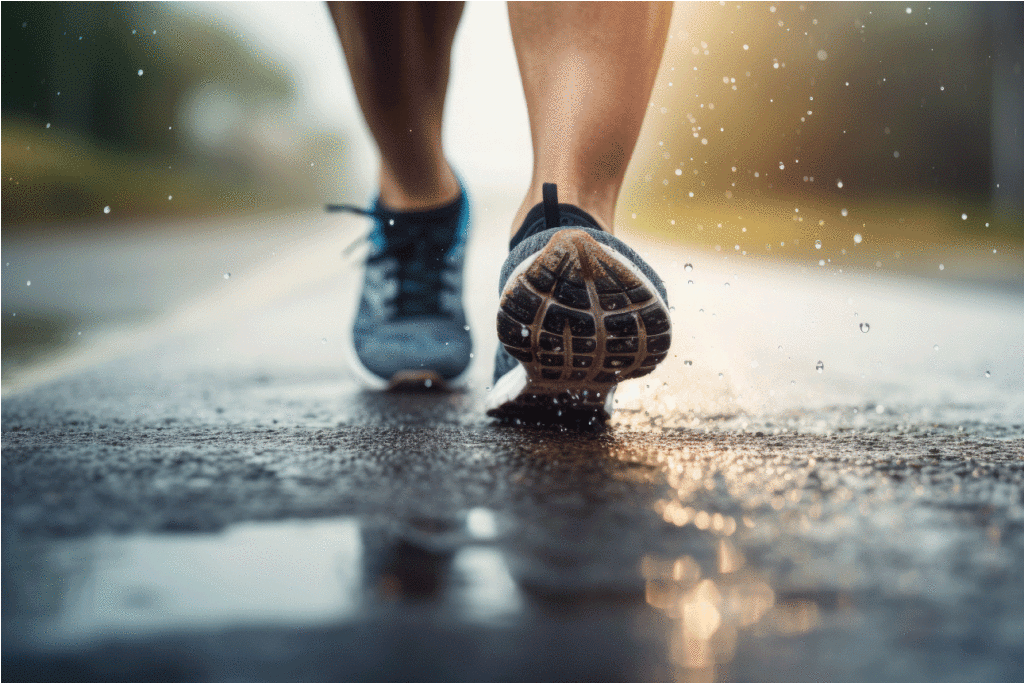Mastering the Elements: Training and Racing in All Weather Conditions for a Faster 5K
Every dedicated runner knows that when it comes to chasing that 5K personal best, it’s not just about the training schedule, pace, or shoes. It’s also about understanding and adapting to the many environmental factors that can influence performance – and among the most influential of these are weather conditions. From blistering heat to freezing temperatures, from strong gusts to torrential downpours, Mother Nature always has a card to play. Here’s how to deal with various weather challenges and come out on top.
Sun and Heat: From Friend to Foe
It’s not uncommon for runners to crave a sunny day for their outdoor run, but it’s essential to recognize when that sun can become a foe rather than a friend.
Training Tips in Heat:
- Hydrate, hydrate, hydrate! As temperatures rise, your body sweats more, potentially leading to dehydration, which can significantly impair performance. Ensure you drink water before, during, and after your run.
- Run Early or Late: The sun’s rays are most potent between 10 am and 4 pm. Train early in the morning or later in the evening to avoid the peak heat.
- Wear the Right Gear: Opt for moisture-wicking, light-colored clothing that reflects sunlight.
Race Day Tips in Heat:
- Adjust Pace Expectations: Heat can slow you down. Listen to your body, and don’t push yourself to a dangerous extent.
- Utilize Water Stations: Not just for drinking! Pouring some water over your head can help you cool down.
Rain and Wet Conditions: Embrace the Challenge
A little drizzle can be refreshing. But when faced with heavy rain or soaked paths, different strategies are necessary.
Training Tips for Wet Conditions:
- Gear Up: Wear a brimmed hat to keep rain out of your eyes, and opt for shoes with good grip to prevent slipping.
- Mind Your Stride: Shorten your strides for better control and stability.
- Avoid Puddles: Wet feet can lead to blisters. Try to keep your feet as dry as possible.
Race Day Tips in the Rain:
- Dress in Layers: A light, water-resistant layer can help you stay dry without overheating.
- Embrace It: Use the rain as a motivator! Sometimes the most memorable races are those with challenging conditions.
Wind and Gusts: Facing the Invisible Opponent
The wind can be an unpredictable opponent, often changing direction and intensity without warning.
Training Tips for Windy Days:
- Start Against the Wind: Begin your run facing the wind, so you have it at your back during the second half when you’re likely more fatigued.
- Stay Low: Reducing your profile by leaning slightly into the wind can help minimize resistance.
Race Day Tips in Wind:
- Drafting: If possible, run behind a group or a larger runner to shield yourself from headwinds.
- Stay Positive: The wind can be mentally challenging. Focus on maintaining a positive mindset, and remember that everyone else is facing the same conditions.
Cold and Snow: Conquering the Chill
Running in the cold requires preparation and understanding of how the body reacts to lower temperatures.
Training Tips for Cold Weather:
- Layer Up: Begin with moisture-wicking base layers and add insulating layers on top. You can always shed layers if you get too warm.
- Protect Extremities: Fingers, toes, ears, and the nose are most susceptible to frostbite. Wear gloves, thermal socks, and earmuffs or hats.
- Warm Up Properly: Cold muscles are more prone to injury. Spend extra time warming up indoors if possible.
Race Day Tips in the Cold:
- Stay Active Pre-race: Keep moving to maintain body heat until the race starts.
- Adjust Expectations: Snow and ice can slow you down. Safety first!
Weather conditions don’t have to be a barrier. In fact, when approached correctly, they can become an integral part of your training, teaching you resilience and adaptability. By mastering the elements and preparing for every eventuality, you set yourself up not only for a faster 5K but for a richer and more diverse running experience. Always remember, it’s not about waiting for the storm to pass, but about learning to run in the rain.
